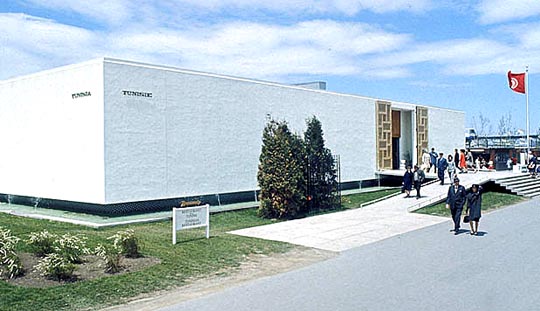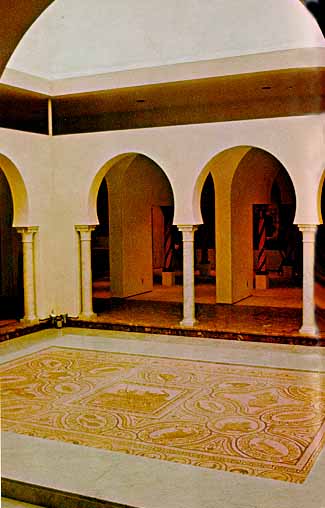Tunisia Pavilion
Tunisia's pavilion, rectangular in shape, was pure dazzling white except for a facing of blue tiles along its lower edge. It was entirely surrounded by a moat. Its entrance, great, heavy, double doors of solid cedar were carved in lace-like fretwork.
| Tunisia's Pavilion had a spartan exterior. |
Inside the pavilion exhibits were grouped around a patio with graceful columns reminiscent of Tunisia's ancient Arab palaces. Across the hall was a fountain surrounded by a pink marble floor. Nearby was an Orpheus mosaic which was found in a 2nd century Roman villa, and by a Bacchus from the Tunisian National museum. Elsewhere was a splendid collection of Korans and an electronic device that answered questions about Tunisian life.
The multi-colored colonnades framed small open workshops where artisans were at work. They weaved carpets, shaped a piece of pottery, embossed a copper tray and made a birdcage. Jewelry was shaped in the Berber tradition.

| Tunisia pavilion's interior. |